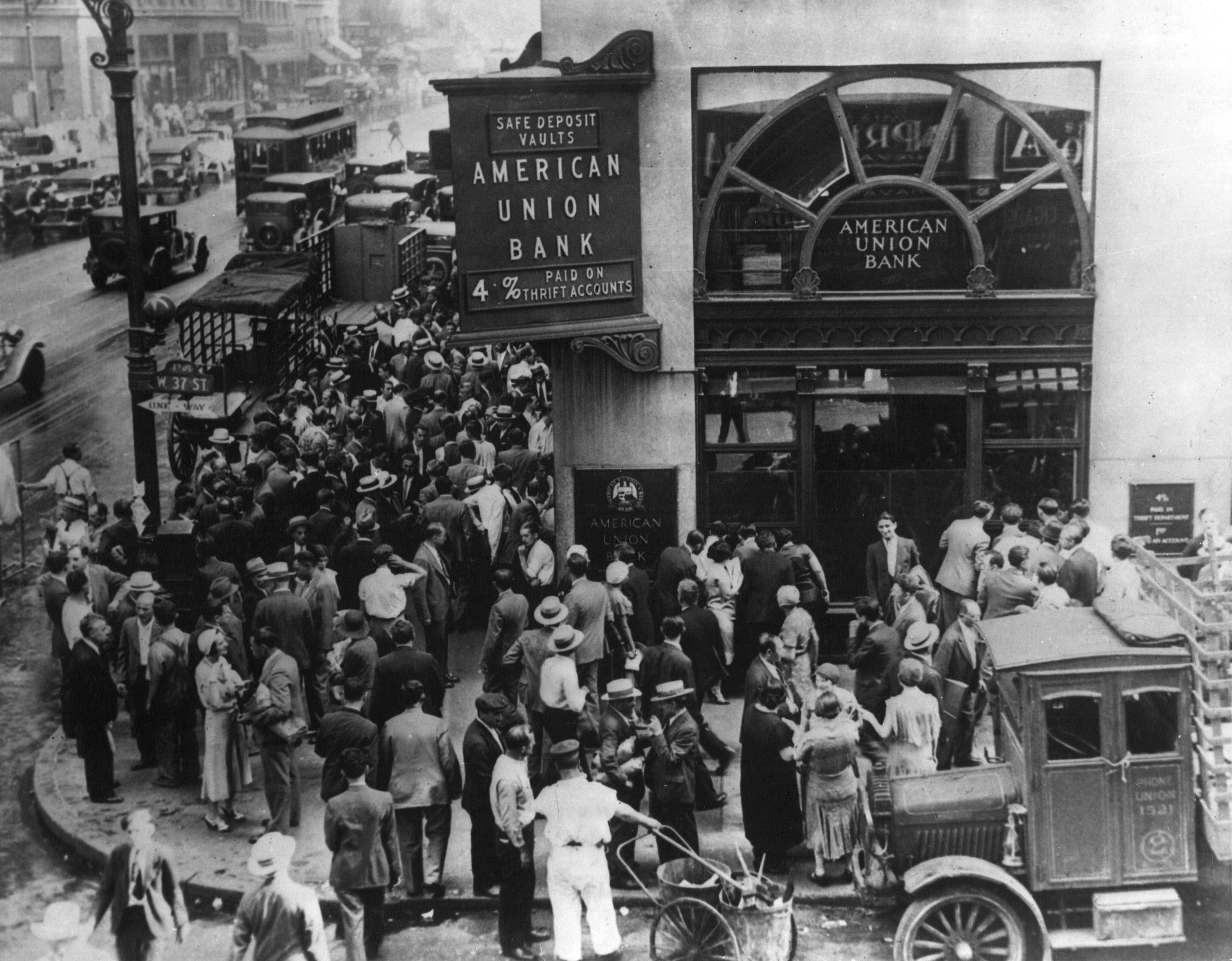Trajan
 (1000+ posts)
Send PM |
Profile |
Ignore
(1000+ posts)
Send PM |
Profile |
Ignore
|
Sun Sep-21-08 01:31 PM
Original message |
| The Great Depression: Debt ... |
|
This is an excerpt from wikipedia from the entry for Great Depression .... Some food for thought ... http://en.wikipedia.org/wiki/Great_DepressionDebt Crowd at New York's American Union Bank during a bank run early in the Great Depression. Crowd at New York's American Union Bank during a bank run early in the Great Depression.
Debt is seen as one of the causes of the Great Depression, particularly in the United States. Macroeconomists including Ben Bernanke, the current chairman of the U.S. Federal Reserve Bank, have revived the debt-deflation view of the Great Depression originated by Arthur Cecil Pigou and Irving Fisher: in the 1920s, American consumers and businesses relied on cheap credit, the former to purchase consumer goods such as automobiles and furniture, and the latter for capital investment to increase production. This fueled strong short-term growth but created consumer and commercial debt. People and businesses who were deeply in debt when price deflation occurred or demand for their product decreased often risked default. Many drastically cut current spending to keep up time payments, thus lowering demand for new products. Businesses began to fail as construction work and factory orders plunged.
Massive layoffs occurred, resulting in US unemployment rates of over 25% by 1933. Banks which had financed this debt began to fail as debtors defaulted on debt and depositors attempted to withdraw their deposits en mass, triggering multiple bank runs. Government guarantees and Federal Reserve banking regulations to prevent such panics were ineffective or not used. Bank failures led to the loss of billions of dollars in assets. Outstanding debts became heavier, because prices and incomes fell by 2050% but the debts remained at the same dollar amount. After the panic of 1929, and during the first 10 months of 1930, 744 US banks failed. (In all, 9,000 banks failed during the 1930s). By 1933, depositors had lost $140 billion in deposits.<8>
Bank failures snowballed as desperate bankers called in loans which the borrowers did not have time or money to repay. With future profits looking poor, capital investment and construction slowed or completely ceased. In the face of bad loans and worsening future prospects, the surviving banks became even more conservative in their lending.<8> Banks built up their capital reserves and made fewer loans, which intensified deflationary pressures. A vicious cycle developed and the downward spiral accelerated. This kind of self-aggravating process may have turned a 1930 recession into a 1933 great depression.
snip-
|